13 Application Layer
Applications are the entities that communicate with each other to exchange services
To make any use of the Internet, application programs should run on the two endpoints of a network connection
- “Client” applications request service
- “Server” applications provide service
A socket is one end of an inter-process communication channel.
Client Server Model¶
Many-to-One
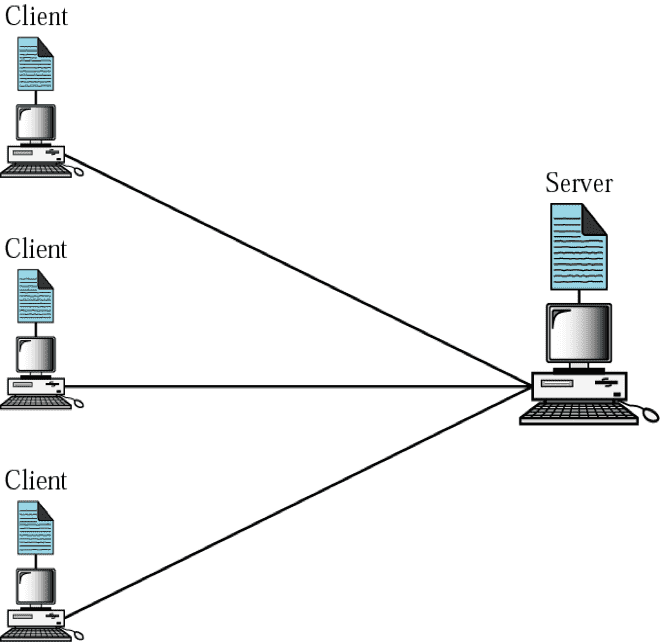
| Server | Client |
|---|---|
| Run all the time (i.e. infinite) Provide service to any client Usually specialize in providing certain type of service, e.g. Mail Listen to a well-known port and passively open connection. | Run when needed, then terminate (i.e. finite) Actively open TCP or UDP connection with Server’s socket |
- Client needs to know existence & address of server
- However, the server does not need to know the existence or address of the client prior to the connection
- Once a connection is established, both sides can send and receive information
Connection Establishment¶
- Both client and server will construct a socket
- The process to establish a socket on the client side is different from the process to establish a socket on the server side
P2P (Peer-to-Peer) Model¶
Every node in the network acts alike
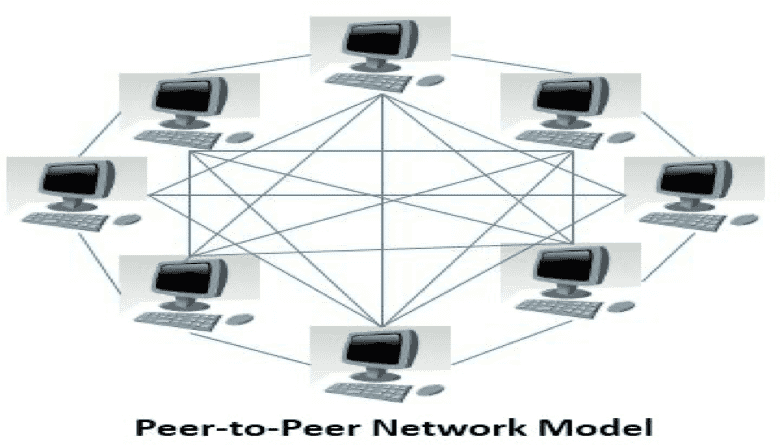
Advantages¶
- No central point of failure
-
Scalability
-
Since every peer is alike, it is possible to add more peers to the system and scale to larger networks
Disadvantages¶
- Decentralized coordination; How to keep global state consistent?
-
All nodes may not be equal
-
Computing power
- Bandwidth
HTTP¶
HyperText Transfer Protocol
- HTTP 1.0: RFC 1945
- HTTP 1.1: RFC 2068 (persistent TCP)
Used for Client-Server model
- Client: Browser request & receive Web objects
- Server: Web server sends objects in response to requests
Properties¶
- Uses TCP
- “Stateless”
- A ‘state’ is information kept in memory of a host, server or router to reflect past events: such as routing tables, data structures or database entries
- HTTP server maintains no information about past client requests
- Protocols that maintain “state” are complex!
- history (state) is maintained
- if server/client crashes, views of “state” may be inconsistent, must be reconciled
- state is added via ‘cookies’
Steps¶
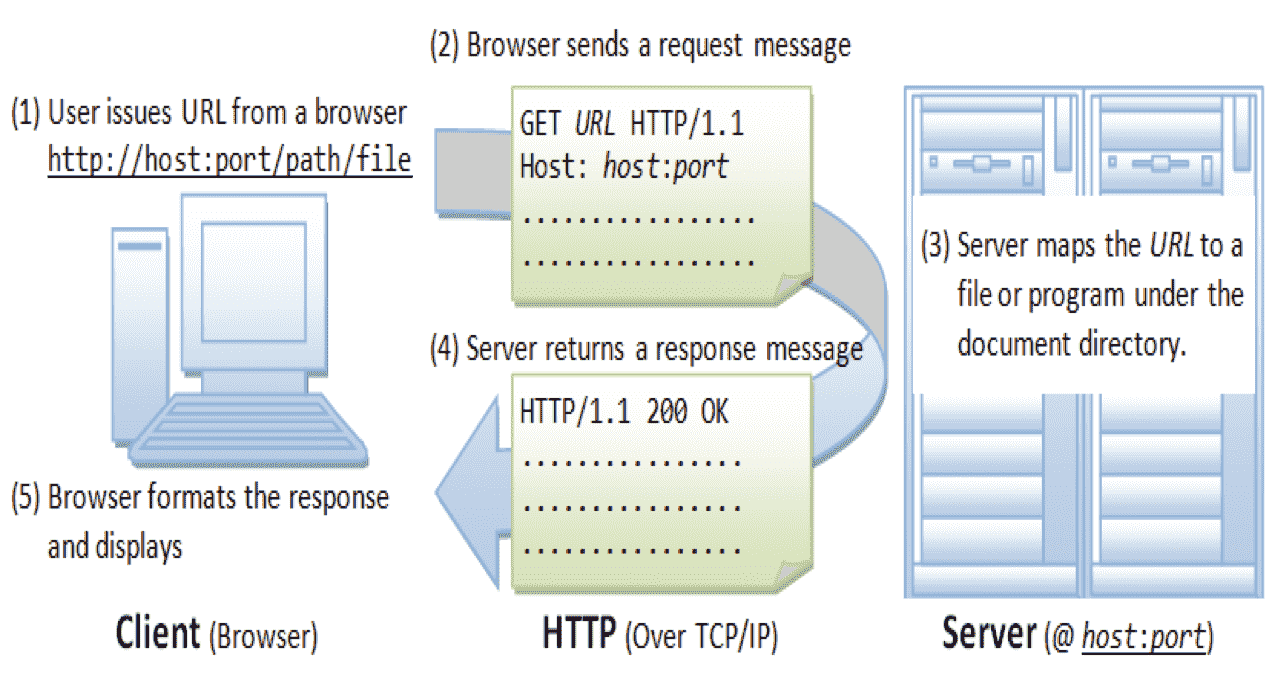
Types¶
| Non-Persistent HTTP | Persistent HTTP without Pipelining | Persistent HTTP with Pipelining | |
|---|---|---|---|
| Max no of objects sent over TCP connection | 1 | Multiple | Multiple |
| Used in HTTP Version | HTTP/1.0 | HTTP/1.1 | |
| Categories | |||
| Steps | 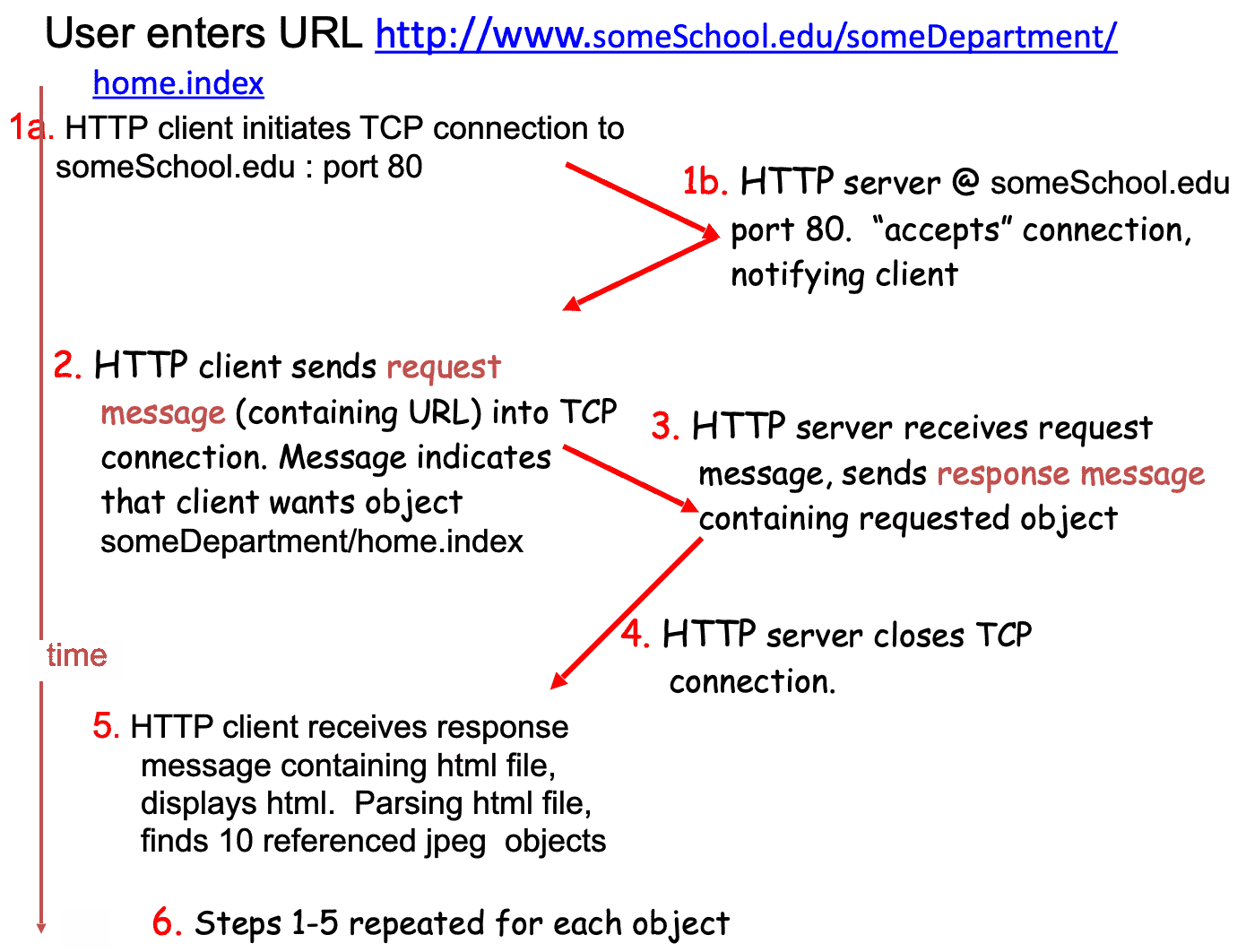 | Server leaves connection open after sending response Subsequent HTTP messages between same client/server sent over open connection Client issues new request only when previous response has been received One RTT for each referenced object | Server leaves connection open after sending response Subsequent HTTP messages between same client/server sent over open connection Client sends requests as soon as it encounters a referenced object 1 RTT for all referenced objects |
| Total Response Time (\(n =\) no of objects) | \(n (2 \ \text{RTT} + \text{Transmit Time})\) - one RTT to initiate TCP connection - one RTT for HTTP request & first few bytes of HTTP response to return - file transmission time | \(n (1 \ \text{RTT} + \text{Transmit Time})\) | \(1 \ \text{RTT} + n(\text{Transmit Time})\) |
| Disadvantages | - requires 2 RTTs per object - OS overhead for each TCP connection - browsers often open parallel TCP connections to fetch referenced object | 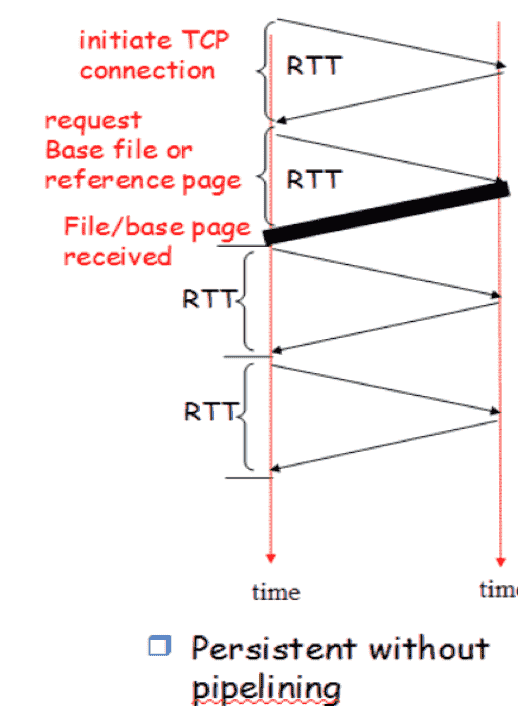 | 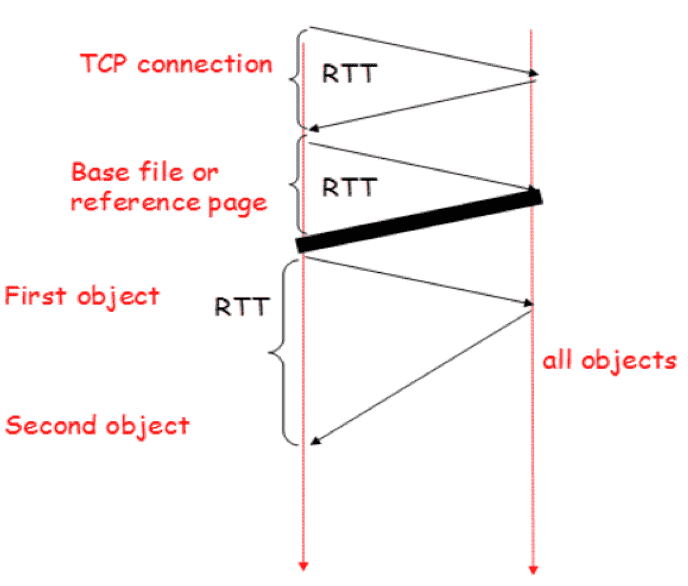 |
| Non-Persistent & Non-Parallel | Non-Persistent & Parallel |
|---|---|
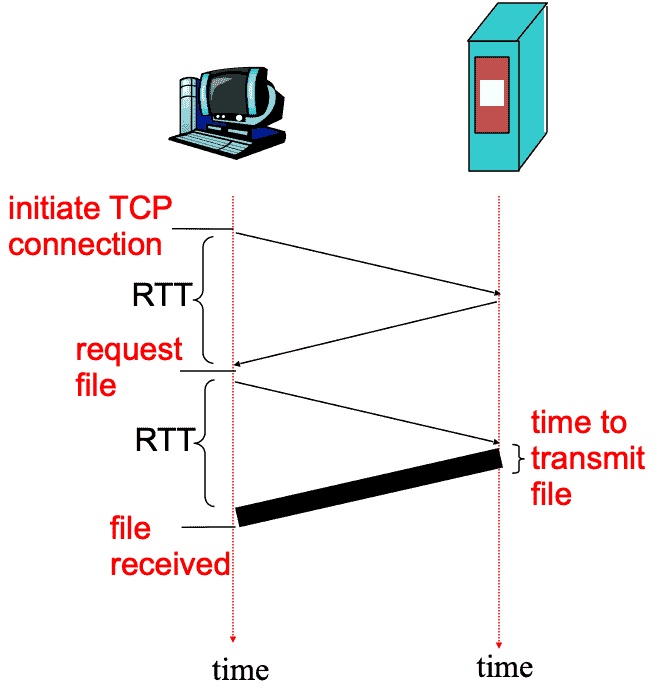 | 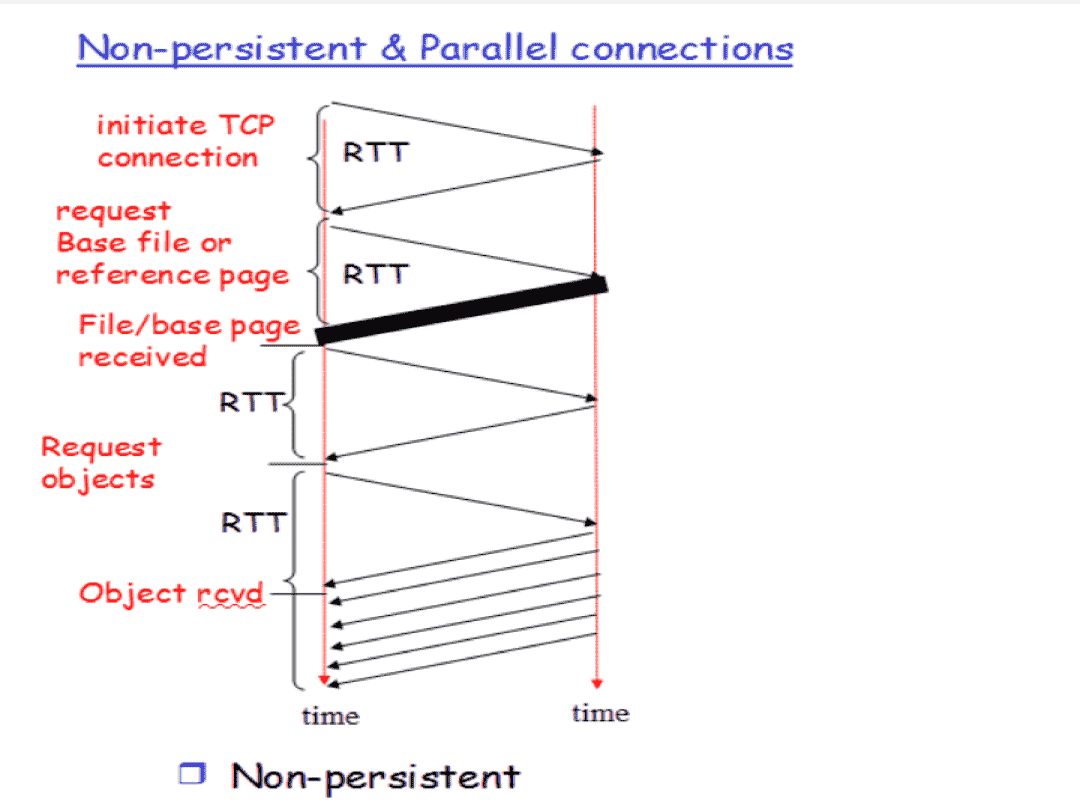 |
HTTP Messages¶
| HTTP Request | HTTP Response | |
|---|---|---|
| Format | 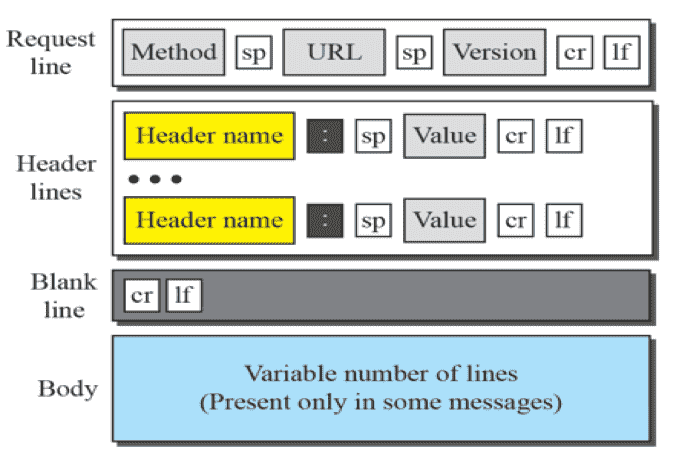 | 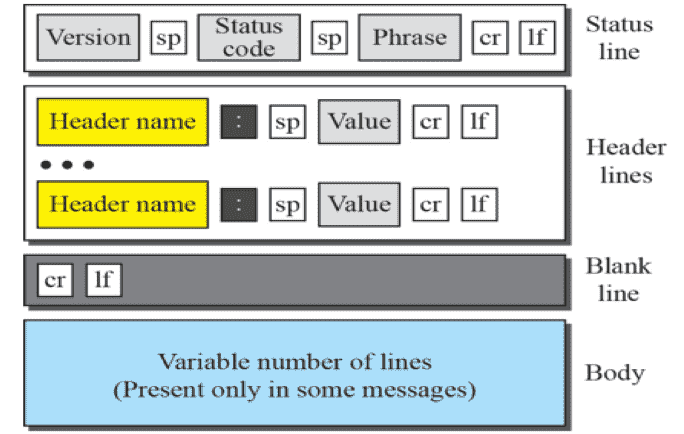 |
| Example | 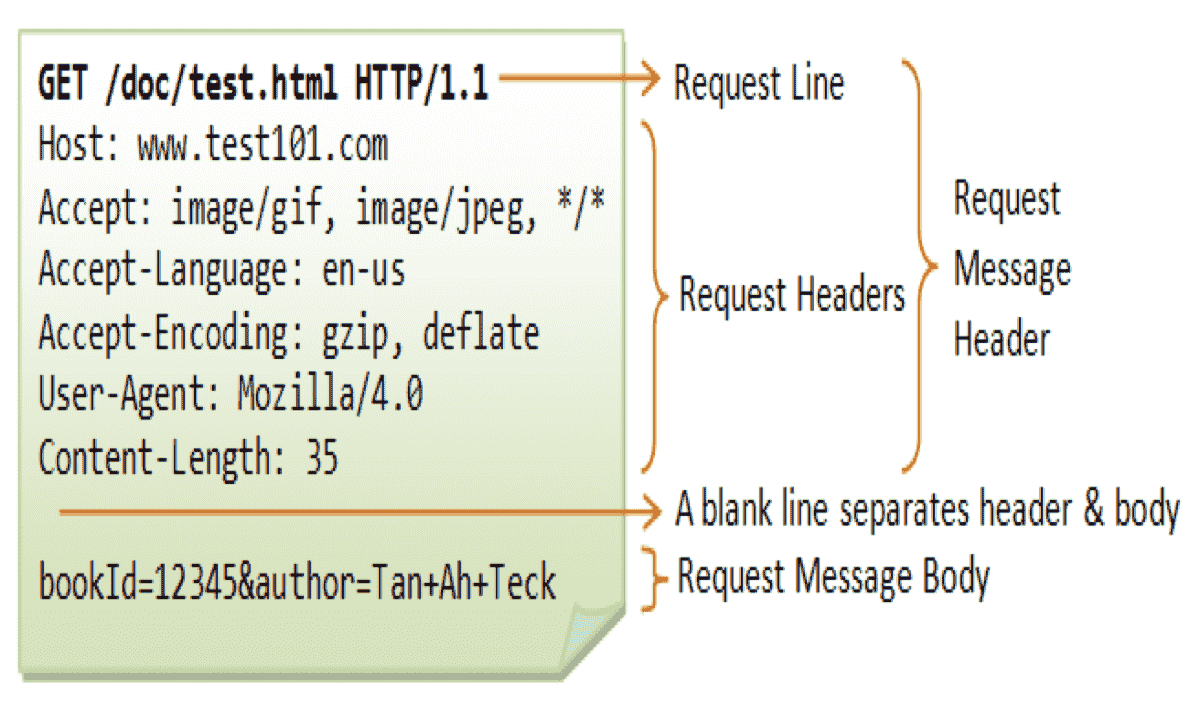 | 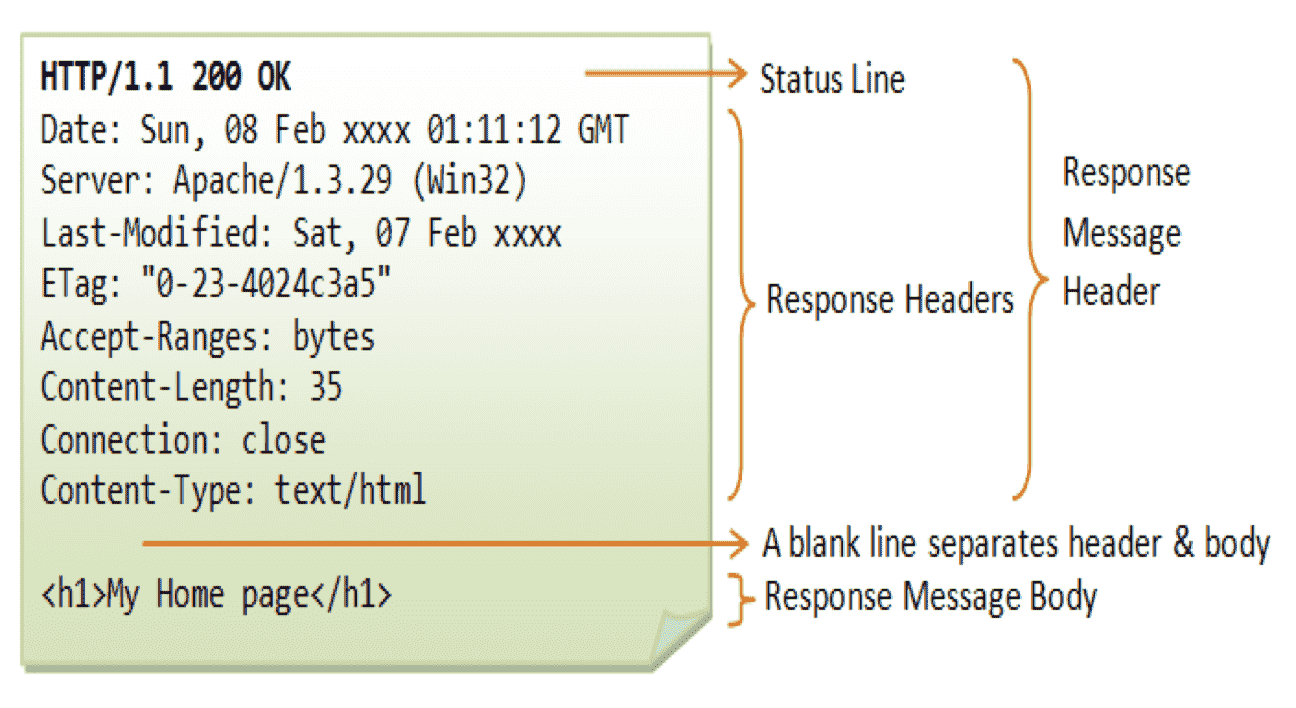 |

Headers¶
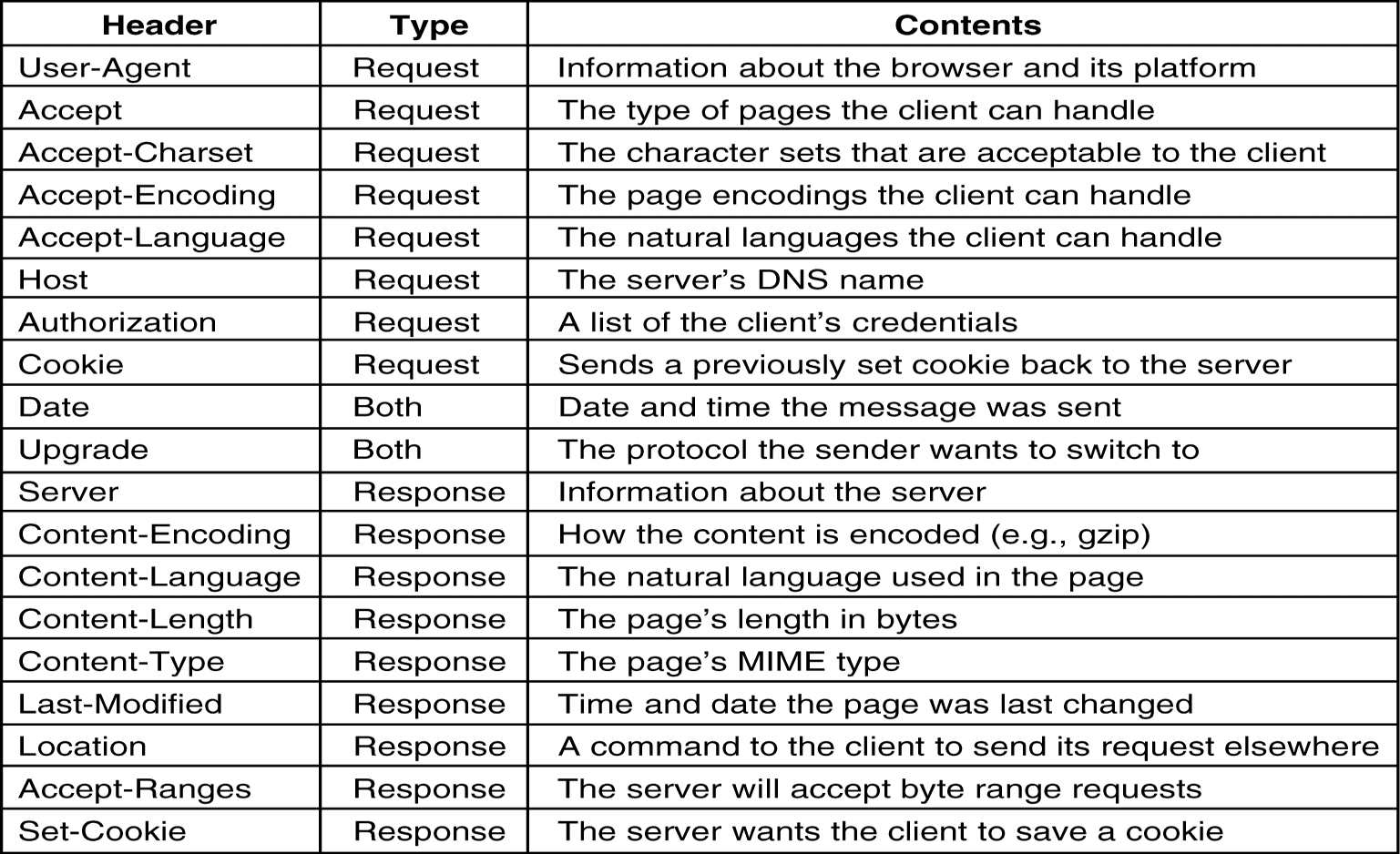
Responses¶

HTTP Methods¶
